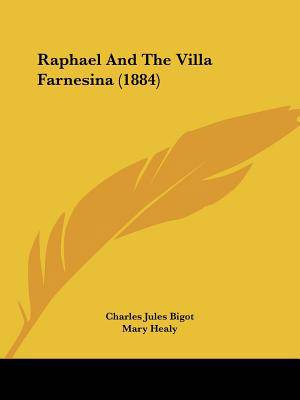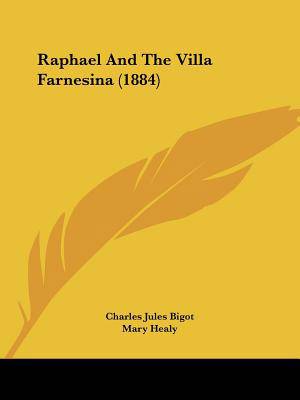
- Retrait gratuit dans votre magasin Club
- 7.000.000 titres dans notre catalogue
- Payer en toute sécurité
- Toujours un magasin près de chez vous
- Retrait gratuit dans votre magasin Club
- 7.000.0000 titres dans notre catalogue
- Payer en toute sécurité
- Toujours un magasin près de chez vous
33,95 €
+ 67 points
Description
Raphael and the Villa Farnesina is a book written by Charles Jules Bigot in 1884. The book explores the life and work of the famous Italian Renaissance artist, Raphael, and his connection to the Villa Farnesina in Rome. The Villa Farnesina is a magnificent Renaissance palace built for the wealthy banker Agostino Chigi in the early 16th century. Raphael was commissioned to decorate the villa with frescoes, and his work there is considered to be some of his finest. The book provides a detailed account of Raphael's life, including his early years in Urbino, his apprenticeship in Perugia, and his move to Florence, where he became a leading artist of the High Renaissance. The author also delves into Raphael's relationship with his patrons, including the powerful Medici family and the Vatican. The main focus of the book, however, is on Raphael's work at the Villa Farnesina. The author provides a detailed description of the frescoes that Raphael painted there, including the famous Galatea and the Triumph of Galatea. The book also includes numerous illustrations and photographs of the villa and its frescoes, allowing readers to fully appreciate the beauty and complexity of Raphael's work. Overall, Raphael and the Villa Farnesina is a fascinating and informative book that provides a unique insight into the life and work of one of the greatest artists of the Italian Renaissance. It is a must-read for anyone interested in art history, Renaissance culture, or the history of Rome.This scarce antiquarian book is a facsimile reprint of the old original and may contain some imperfections such as library marks and notations. Because we believe this work is culturally important, we have made it available as part of our commitment for protecting, preserving, and promoting the world's literature in affordable, high quality, modern editions, that are true to their original work.
Spécifications
Parties prenantes
- Auteur(s) :
- Traducteur(s):
- Editeur:
Contenu
- Nombre de pages :
- 168
- Langue:
- Anglais
Caractéristiques
- EAN:
- 9781104896263
- Date de parution :
- 10-08-09
- Format:
- Livre broché
- Format numérique:
- Trade paperback (VS)
- Dimensions :
- 210 mm x 279 mm
- Poids :
- 390 g

Les avis
Nous publions uniquement les avis qui respectent les conditions requises. Consultez nos conditions pour les avis.






